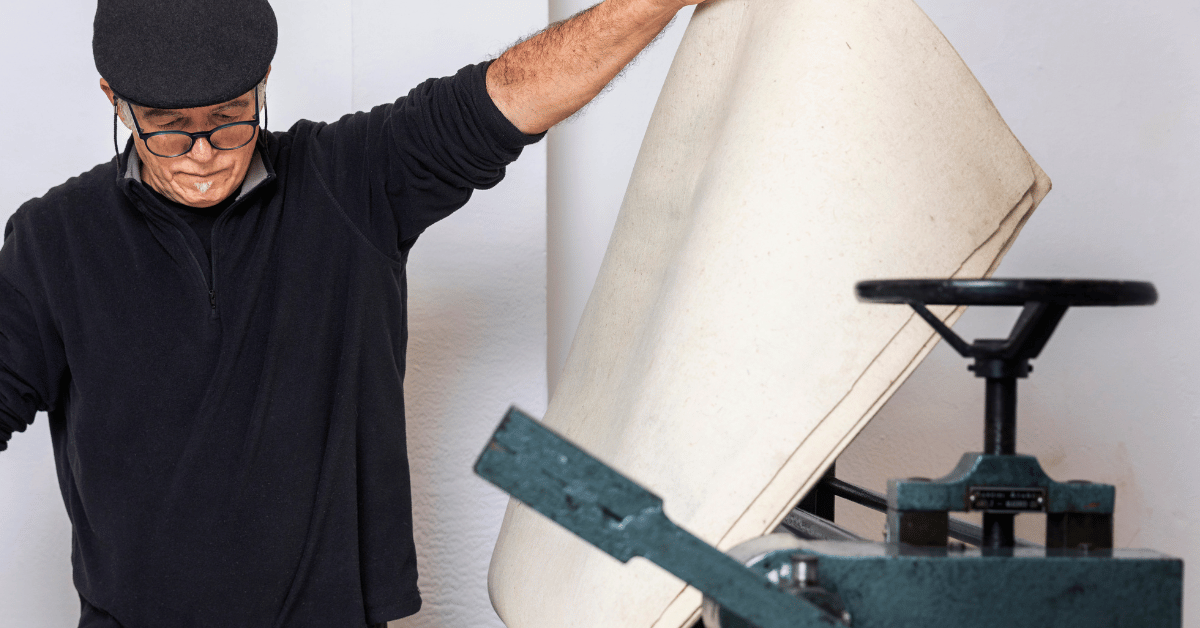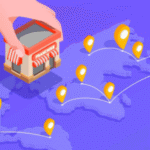For artists, students, and hobbyists, printmaking offers a powerful means of expression—duplicating imagery, telling stories, or simply exploring texture and design. However, one barrier many creatives face is the cost. Printmaking, though rooted in centuries-old tradition, often feels inaccessible due to the high price tags on professional equipment, specialty inks, and archival papers. But what if you could achieve striking visual results without emptying your wallet? The good news is: you can. Cheap printmaking is not only possible—it’s thriving, adaptable, and increasingly celebrated for its raw authenticity.
In this comprehensive guide, we’ll explore practical and effective ways to practice cheap printmaking without sacrificing visual integrity or artistic freedom. From understanding the core principles of low-cost materials to improvising with tools you already own, this article is built to empower your printmaking journey. Whether you’re looking to produce personal work, teach a classroom, or start an affordable art business, you’ll find techniques, strategies, and insights that align with tight budgets and high creative ambition. We’ll also look at community-driven alternatives, DIY hacks, and alternative materials that are as sustainable as they are economical.
As acclaimed printmaker Nicole Eisenman once said, “In limitation, there is infinite freedom.” Cheap printmaking, at its heart, isn’t about compromise—it’s about innovation. This article will demonstrate just how expansive your creative possibilities can be, even when funds are modest. Let’s begin by examining the key pillars of affordable printmaking and how artists around the world are reshaping the medium using tools as simple as cardboard and kitchen spoons.
Understanding the Principles of Cheap Printmaking
The foundation of cheap printmaking rests on three critical elements: affordability, accessibility, and adaptability. These principles allow an artist to create impactful work even in resource-constrained environments. To truly grasp what makes printmaking inexpensive yet effective, it’s essential to look at where cost typically accumulates. Professional-grade presses, high-end linoleum, specialty inks, and archival-quality paper quickly inflate production budgets. By substituting these materials with locally available, repurposed, or household alternatives, creators can retain the essence of the craft without the financial burden.
Adaptability is crucial. Traditional relief methods, such as linocut and woodcut, are adaptable to materials like craft foam, recycled cardboard, or even styrofoam trays. Intaglio and etching processes can be simulated using simple techniques with aluminum foil and ballpoint pens. Screen printing—often considered resource-heavy—can be replaced by hand-stenciling or monoprinting using transparency sheets and acrylic paint. The accessibility component refers not only to the cost but also to the ease with which beginners can engage with the medium. When the barriers are lowered, more people can engage with visual storytelling.
The balance lies in understanding the creative intention and finding the most efficient way to translate it onto print. Cheap printmaking invites artists to be inventors, experimenting with what’s on hand and adapting techniques to fit budget constraints. It encourages a return to the fundamentals—mark-making, layering, repetition, and negative space—and uses those to communicate artistic ideas powerfully, without relying on expensive tools. At its best, cheap printmaking revitalizes the artistic process with playfulness and ingenuity.
Affordable Tools and Substitutes Every Printmaker Should Know
One of the most empowering aspects of budget-friendly printmaking is discovering how everyday items can double as artistic tools. The key to effective substitution is not just replicating the function but also leveraging its unique texture and quality. For instance, a spoon can effectively replace a printing press when doing hand-burnished monoprints. Similarly, foam sheets from craft stores—often used for kids’ projects—can substitute for traditional linoleum in relief printing.
Markers, acrylics, or even instant coffee can be used in place of oil-based inks for more eco-conscious and low-cost printing. Even your paper options expand: newspaper, brown packing paper, and junk mail all become canvases for expression. When ink isn’t accessible, mix tempera with a drop of dish soap to replicate the flow and grip of printmaking ink.
An overlooked tool in the affordable printmaker’s kit is tape. Masking tape can create clean negative spaces, while duct tape’s adhesive properties allow for stencil creation. Old credit cards or expired gift cards can replace brayers for ink spreading. These adaptations don’t merely help artists cut costs; they also spark experimentation and happy accidents—often leading to stylistic breakthroughs.
Importantly, keeping a small collection of versatile items—like foam rollers, box cutters, old newspapers, and plastic sheets—allows for a flexible print setup anywhere, from bedrooms to classrooms to sidewalk exhibitions. When artists are equipped with the knowledge of alternative tools, they gain the confidence to produce meaningful work regardless of setting or budget.
Table 1: Cost Comparison of Traditional vs Cheap Printmaking Tools
| Tool/Material | Traditional Option (Avg. Cost) | Cheap Alternative | Approximate Cost |
|---|---|---|---|
| Linoleum block | $6 – $12 per block | Craft foam or cardboard | $1 – $3 |
| Printing press | $300 – $2000 | Wooden spoon or baren | $0 – $5 |
| Brayer (ink roller) | $20 – $40 | Old gift card or foam roller | $0 – $5 |
| Oil-based ink | $10 – $25 per color | Acrylic with dish soap | $3 – $6 |
| Archival paper | $2 – $5 per sheet | Newsprint, brown paper | Free – $0.50 |
Types of Cheap Printmaking Techniques for Beginners
Not all printmaking techniques are equal in terms of cost or complexity. For newcomers or those working within a budget, it’s vital to choose methods that require fewer tools but yield high visual impact. Relief printing, especially with foam or cardboard, stands out as a top choice. The process involves carving into a surface and applying ink to the raised sections, then pressing it onto paper. Even without a press, hand pressure suffices, especially with soft materials.
Monoprinting offers another low-cost method. By painting or inking a flat surface (like a plastic sheet or glass), then pressing paper onto it, artists can produce one-of-a-kind impressions. This technique rewards spontaneity and works well in classroom settings or for expressive design work. Stencil printing, too, is highly accessible—using cut shapes and spray paint or sponge dabbing to transfer designs repeatedly across surfaces.
Gelatin printing, a type of monoprinting done on a gel-like plate made from simple kitchen gelatin, has become increasingly popular among DIY printmakers. It allows for rich layering, textures, and fast iterations without a press. Additionally, collagraph—a technique involving textured surfaces built with found objects glued onto a board—makes for deeply embossed prints when hand-pressed.
By focusing on these simple methods, creators reduce the learning curve and cost, allowing more time to experiment and refine their visual language. This democratizes printmaking and introduces the medium to broader audiences who may have never thought they could afford to participate.
Building a Low-Cost Printmaking Studio at Home
Creating a home printmaking space doesn’t require a dedicated studio or significant investment. All that’s necessary is thoughtful planning, a few multi-use tools, and a clean, well-ventilated space. Start with a foldable table covered with a vinyl tablecloth or plastic sheet for easy cleanup. Use a cutting mat or even a thick magazine as a carving base for safety. Lighting is crucial; a bright desk lamp or natural window light ensures visibility during intricate cuts or ink application.
Storage solutions can be simple and upcycled. Cardboard boxes or kitchen organizers hold papers, foam sheets, and ink containers neatly. Drying prints can be achieved with a hanging line and clothespins, or even by laying them flat on newspapers across the floor. Cleaning supplies—like vinegar, old rags, and a basin—help maintain hygiene without expensive solvents.
Organization goes a long way in productivity. Label containers, dedicate areas for tools vs. wet work, and make a habit of tidying after each session. Portable toolboxes can help if your workspace doubles as a living area. With such small tweaks, a home studio becomes not just functional, but inviting—a place where creativity can flow consistently and affordably.
Table 2: Essential Items for a DIY Printmaking Studio Under $50
| Item | Purpose | Estimated Cost |
|---|---|---|
| Plastic tablecloth | Protects surface from ink/paint | $2 – $5 |
| Craft foam sheets | Replaces linoleum blocks | $5 – $10 |
| Acrylic paint | Ink substitute | $6 – $12 |
| Sponge brushes | Application tool | $3 – $5 |
| Recycled paper/newsprint | Printing surface | Free – $5 |
| Spoon or baren | Hand-pressure print transfer | $0 – $5 |
| Storage bins | Tool and paper organization | $5 – $8 |
FAQs
1. What is the most affordable type of printmaking for beginners?
Relief printing using materials like craft foam, cardboard, or recycled packaging is considered the most cost-effective method for beginners. It requires minimal tools—often just a carving implement, ink or acrylic paint, and a spoon for transferring the print. These materials are inexpensive, widely available, and easy to work with, making it ideal for classrooms, home studios, or casual experimentation.
2. Can I make high-quality prints without a printing press?
Absolutely. Many artists create professional-looking prints using hand pressure methods. A wooden spoon, plastic baren, or even a rolling pin can generate enough pressure to transfer ink effectively. With careful layering, clean inking, and quality technique, hand-pressed prints can rival those made with expensive presses in detail and consistency.
3. What can I use instead of expensive printmaking ink?
Acrylic paint mixed with a drop of dish soap can mimic the flow and consistency of traditional printmaking ink. Some artists also use fabric paint, gouache, or even homemade natural dyes for eco-conscious options. The key is to experiment with ratios to achieve the right tackiness and opacity while ensuring easy clean-up and safety.
4. How do I safely carve without buying professional tools?
You can use craft knives, old ballpoint pens, box cutters, or even toothpicks depending on the softness of your printing surface. For example, foam sheets and styrofoam don’t require sharp tools and can be etched safely, making them ideal for children or group settings. Always carve on a protective surface and away from your body for safety.
5. What kind of paper is suitable for cheap printmaking?
You can print on virtually any paper—newspaper, brown kraft paper, sketchpad pages, magazine backs, or junk mail. Heavier papers like watercolor or cardstock absorb ink better but may cost more. Start with what you have, and upgrade gradually. Some artists even upcycle grocery bags or wrapping paper to add texture and character to their prints.











